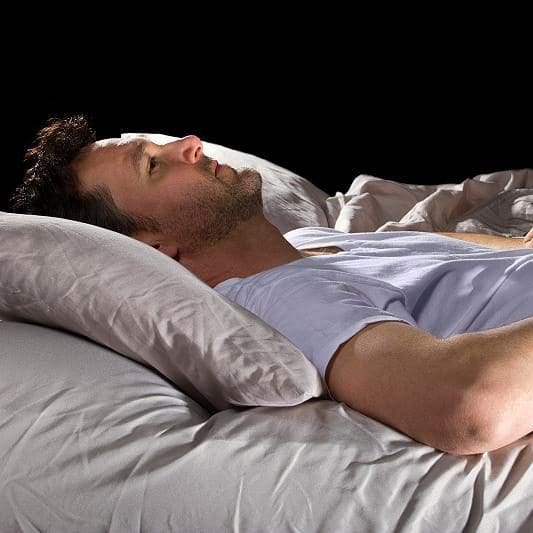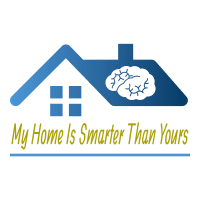A Smart Home is a home that uses some form of technology to improve the lives of the people inside. You have likely lived with a Smart Home of some kind your entire life. A remote control is the most prolific feature of a Smart Home.
Remote controls are available for all kinds of items in the home, and some modern electronics wouldn’t even function without one. The first remote control was introduced on a television in 1950! Can you imagine using a TV without
a remote control today?
Today, a popular remote control is voice. Thanks to Google, Apple and Amazon, many people now use these services to speak to their home or device and it responds.
More intelligent homes take it to another level. Using a “brain,” intelligent homes will do certain things automatically, such as turning lights on and off, setting the security system modes, locking and unlocking doors, operating
the air conditioning to maximize energy efficiency, and many other things in the home.
Take a look around our site for many more ideas of what a modern, intelligent home can do.
Want to see how smart your home is? Take our quiz to find out!
A Smart home compliments your busy life
A Smart Home is where all of the various electronics can be monitored and controlled by a single “brain”, or controller. The smart devices a central controller can talk to are nearly limitless.
Smart devices include:
– lights
– fans
– stereos
– security systems
– TVs
– sprinkler systems
– Garage doors
– Window shades
– Door locks
– And most anything else that runs on electricity or batteries
The list goes on and on and continues to grow. The key to a Smart Home is the central controller, or “brain”. The consumer market for Smart Home technology appears to have centered around the smart speaker – Amazon’s Alexa and Google’s Home. These are great systems and do a fantastic job of bringing Smart Home technology to the masses. However, if you want a smart Home that can integrate everything seamlessly, intuitively and do things without using a voice command to do them, then you will want to invest in a central controller. Check out our Product Spotlights to discover some of the ones we like. Some require an installer, but some are also consumer friendly.
the importance of simplicity in a smart home
For many people, smart homes are used to impress their friends and family. Sure, they can be cool and do amazing things, but a well-designed smart home will never stand out to the people within. A smart home will be the mom that walks behind you turning off the lights, turning up the thermostat when no one is home, and any number of things that you normally should do, but easily forget.
A Smart Home should not be difficult for anyone who comes into the home to operate. You don’t want your family or friends that come to visit for a few days to be frustrated because they can’t figure out how to turn on a light, watch TV or adjust the thermostat! We have all seen badly written programs and apps. Don’t let your home become a bad program that frustrates it’s users.
A Smart Home remembers things when you don’t

You’ve just laid down in the bed, exhausted and ready for a good night’s sleep. “Honey, did you close the garage door and turn off the light?” you hear as your eyes have suddenly become very heavy. You grudgingly throw the covers off and stumble in a sleepy haze towards the garage, and confirm that yes, you did in fact remember to check and the garage door was indeed closed with the light turned off. On the way back to your warm, comfy bed, you stub your toe on the living room ottoman, causing such severe pain that you lie awake for several hours wondering whether or not it’s broken.
Alternatively, on your way to bed in your Smart Home, you put the security system in Night mode, which then turns on all of the exterior lights so you can inspect the outside of your home as you walk towards your bedroom. You hear the garage door closing – “whoops, I must have forgotten to close it when I walked in the house!” Everything looks calm outside, so you get dressed for bed, brush your teeth, head to bed, and turn out the bathroom light as you pass the switch. Your Smart Home has been waiting for those two specific events – the alarm put in night mode and then the bathroom light to be turned off. Once it sees them, it puts the exterior lights on a dim-to-off mode over a 20 minute span, next it waits 2 minutes (so you can get to your bed and under the covers) and then turns off all of the lights and electronics throughout the interior of the home. The A/C is set to a slumber inducing 68 degrees. Your spouse turns over and kisses you goodnight. Finally, you have a long, peaceful, and exceptionally restful night’s sleep.
A Smart Home is a home that supplements your life, improving your well being. In a world where most Americans cannot live without an electronic aid in their pocket – a smart phone – many choose to live with a home that has as the IQ of their grandparent’s home in the 1950’s or 1960’s. They cannot go throughout their day without being reminded on a calendar what they are supposed to do next, but expect that they can remember everything needed to keep their home safe and efficient. Smart Home technology will change your home life the way that Smart Phones changed your daily life.
Check out the Ideas, Product Spotlights and Design Ideas for regular updates that can improve your home life drastically!
Smart Home Components
SMART WIRING
A Smart Home is a wired home. Cat6 or higher network cabling, Coax cable and even fiber optics should all be included. If you have an older house, modern wireless will suffice. Surprisingly, many consumer-grade products only run on wireless (or wi-fi).
Entertainment Systems
Entertainment systems are what have driven the rise in Smart Homes for years. Clients have been looking for simple controls for their home entertainment systems and quickly discovered that those systems can be expanded to control many more devices in their homes. Entertainment systems will always provide the “WOW” factor most home owners are looking for due to the visible or audible changes when prompted by an input.
central controller
Thecontroller is what remembers things when you forget – in other words, a “brain” for your home.
A true Smart Home requires a central controller, preferrably one that is located in the home and not internet-based. This central brain should have real-time access to the status of everything in the home. Afterall, Internet outages still happen.
Status inputs
Just like your brain reacts when your body provides feedback, inputs provide your home with a similar ability.
Every Smart Home needs data to make decisions. Things like security sensors, motion detectors, pressure pads, water sensors, light switches, temperature sensors, thermostats, driveway sensors, doorbells, and so on provide valuable data for a Smart Home to be able to make intelligent decisions.
Items to control
The list of items you can include is nearly endless: TVs, Stereos, whole-house audio, lights, cameras, garage doors, thermostats, door locks, window coverings, water heaters, pool equipment, sprinkler systems, ceiling fans, small appliances, large appliances…….
Basically, if it plugs into the wall, then it likely can be controlled by a Central Controller.
user inputs
Although a well-designed Smart Home will do what is needed based on inputs that don’t need your instructions, sometimes you will want to tell your home to do something specific. A well-designed input system will include: remote controls, touchpads, and even voice control like Alexa and Google Home. Don’t be fooled – these arenot the same thing as a central controller.
